The 6.4L Power Stroke engine found in ’08-and-newer Ford Super Duty’s is one of the most advanced diesels on the market today. From its compound turbos and piezo injectors, to its robust construction, the 6.4L Ford just screams performance potential. There’s no doubt these engines hide a bunch of horsepower in stock form. They have to meet various noise and emissions regulations in order to be sold to the public, which limits the amount of horsepower they can make from the factory. Just how much horsepower was left on the table? Diesel Power magazine decided to find out, and partnered up with a local reader who was willing to put his bone-stock ’08 Ford F-250 under the knife with only 800 miles on the odometer.
First on the list was an improved tune, courtesy of Innovative Diesel. Innovative performs custom tunes using SCT Livewire on modified 6.0L and 6.4L Fords. With a lot more fuel and air going through the engine thanks to Innovative’s race tune, they then then focused on upgrading the intake and exhaust. Since the goal was to make as much power as possible, they contacted Performance Truck Products for a straight-pipe exhaust kit from FloPro Performance Mufflers. This kit replaces the diesel particulate filter and catalyst with a straight-pipe. Removal of the catalyst and DPF makes the truck illegal for on-highway use, so they limited their testing to the dragstrip and dyno. The benefit of this modification is the particulate filter won’t get clogged anymore, and the truck will no longer have to go into its fuel-sapping regeneration mode. They also opted for an S&B Filters air intake kit, which would allow 29 percent more airflow into the engine.
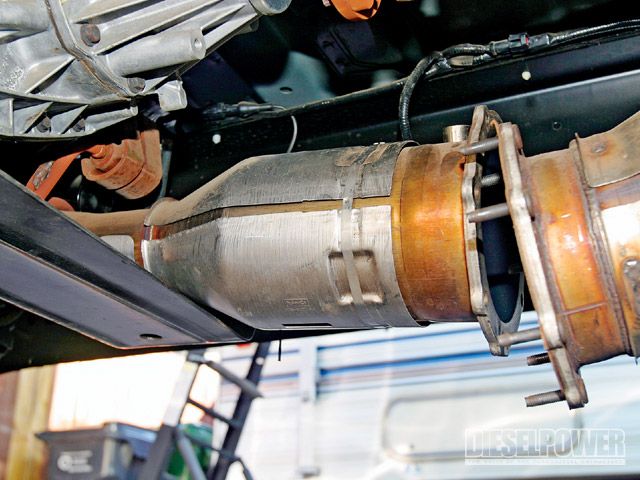
If you start here and unbolt the DPF, it will make your life much easier. Fords factory exhaust system is very well built, and you must remove all the exhaust hangers, clamps, and unbolt the downpipe and catalyst-to-DPF connection before it will even think about coming loose. WD-40 or PB Blaster is your friend here, and is a good way to get those pesky exhaust hangers off.
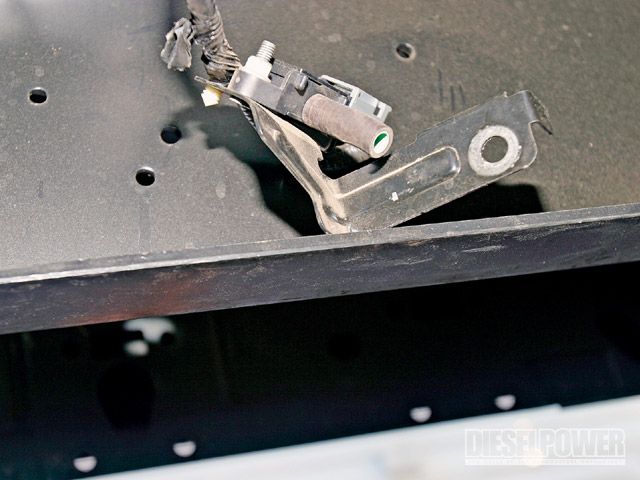
There are four sensors that will need to be removed before the exhaust can be taken off. Be careful when you’re loosening everything up, because this is stuff you don’t want to break. Just be patient and take your time.
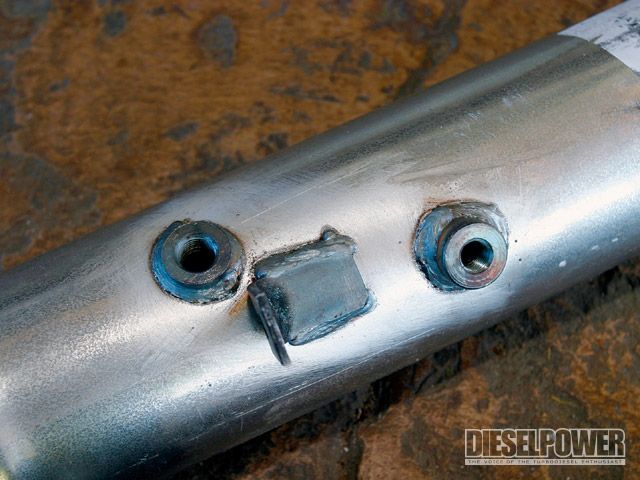
The shop used a FloPro straight-pipe to eliminate the factory DPF and cat. It came with all the provisions for the factory emissions sensors, and was a pretty straightforward install. It should be noted that some of the factory exhaust hangers were not used due to the light weight of the straight-pipe.
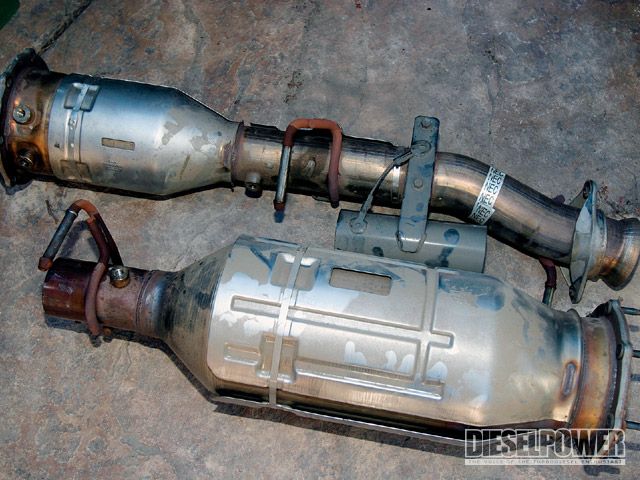
The catalyst and DPF on the new Fords are huge. It wouldn’t be surprising if 50 pounds of weight was lost by going to a straight-pipe.
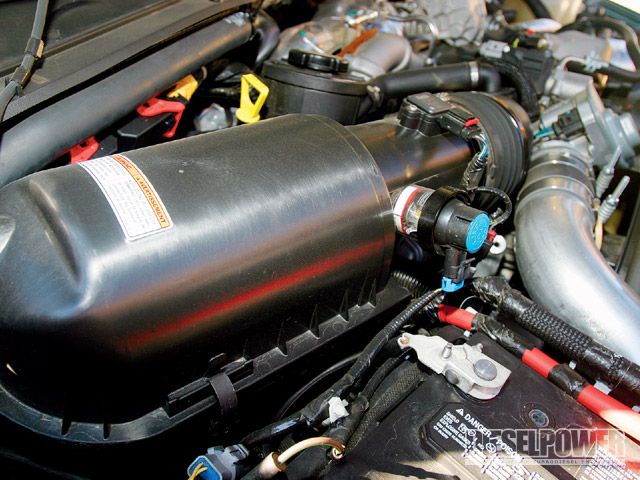
The OEM air intake flows plenty of air for a stock engine, but once the power is turned up, more airflow is needed.
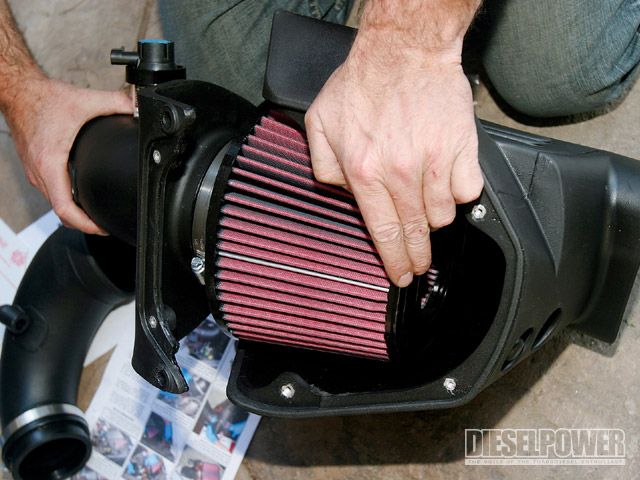
To solve the intake problem, they picked up an S&B air filtration system from Diesel Innovations.
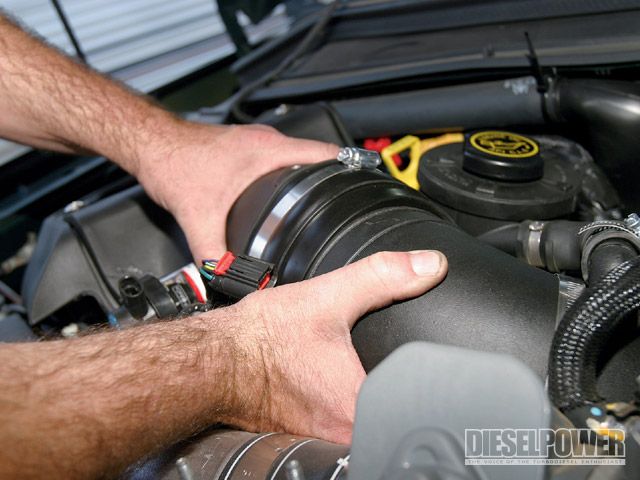
Installing the intake hose supplied with the kit was perhaps the hardest step of the intake upgrade. Use a lot of muscle and a screwdriver to slide it over the turbo inlet.
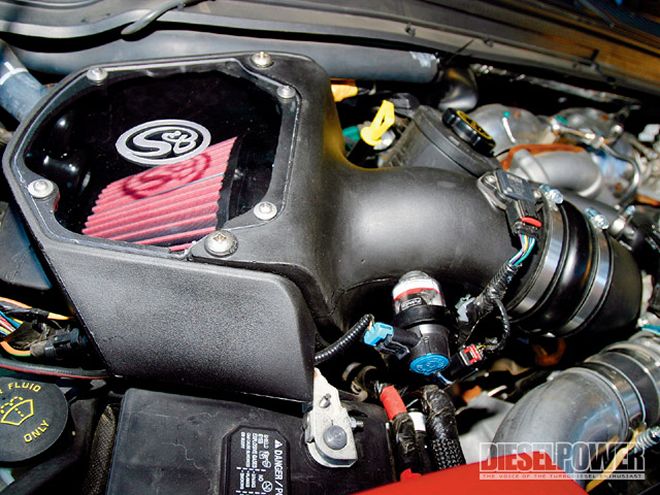
Not only did the S&B air filter improve the trucks looks, it added performance. S&B will custom engrave your airbox lid if you order the intake online.
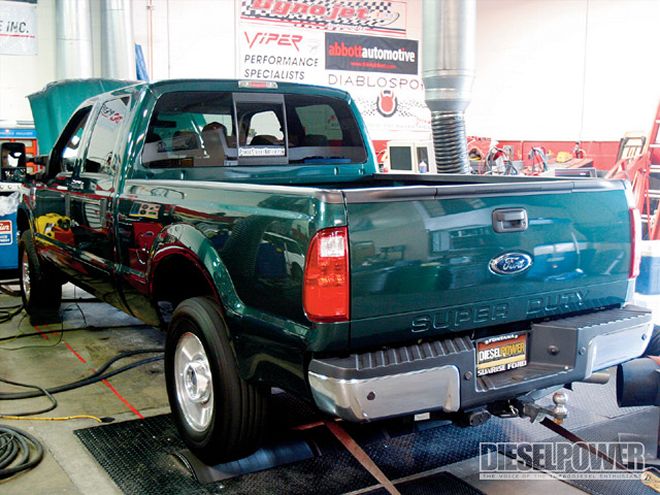
50 Percent Better Fuel Economy!
Despite the off-road nature of these modifications (except the intake, which is 50-state legal), there are some 6.4L-powered Ford owners who are driving on the street with similar setups, and they’re reporting very impressive mileage gains. A normal Power Stroke-powered F-250 or F-350 will get about 10 to 12 mpg city, 14 to 15 mpg highway, and 8 to 9 mpg during heavy towing. With a straight-pipe, tuner, and intake, owners are reporting 15 to 17 mpg city, 20 to 23 mpg highway, and 12 to 14 mpg while towing!
Results:
In stock form, this 2008 Ford made 259 hp. With an intake, exhaust, and Innovative Diesel’s race tune uploaded to the SCT programmer, the 6.4L cranked out 511 horsepower and 972 lb-ft. of torque. Inertia dynamometers are notorious for not loading diesel trucks as much as regular driving. so the real power number might be even higher.
Important Note: You can’t just remove the DPF (exhaust filter) without adding a custom tuner. Otherwise, the truck will go in to it’s regeneration cycle (You know – when you get that message in your display that it’s cleaning the exhaust filter), and get stuck in it.
Legal: All of the after market performance companies offering DPF Delete Kits are quick to point out, these kits are solely for closed-course racing and off-road use only, and are not street legal in any state. It is Federal Law. Get busted on a public road with the DPF removed and the owner of the vehicle faces a $2,500 fine — and the Installer who did the work faces a $25,000 fine…. as does the company who sold the DPF Delete Kit.
Resources:
SCT Automotive Performance Products
